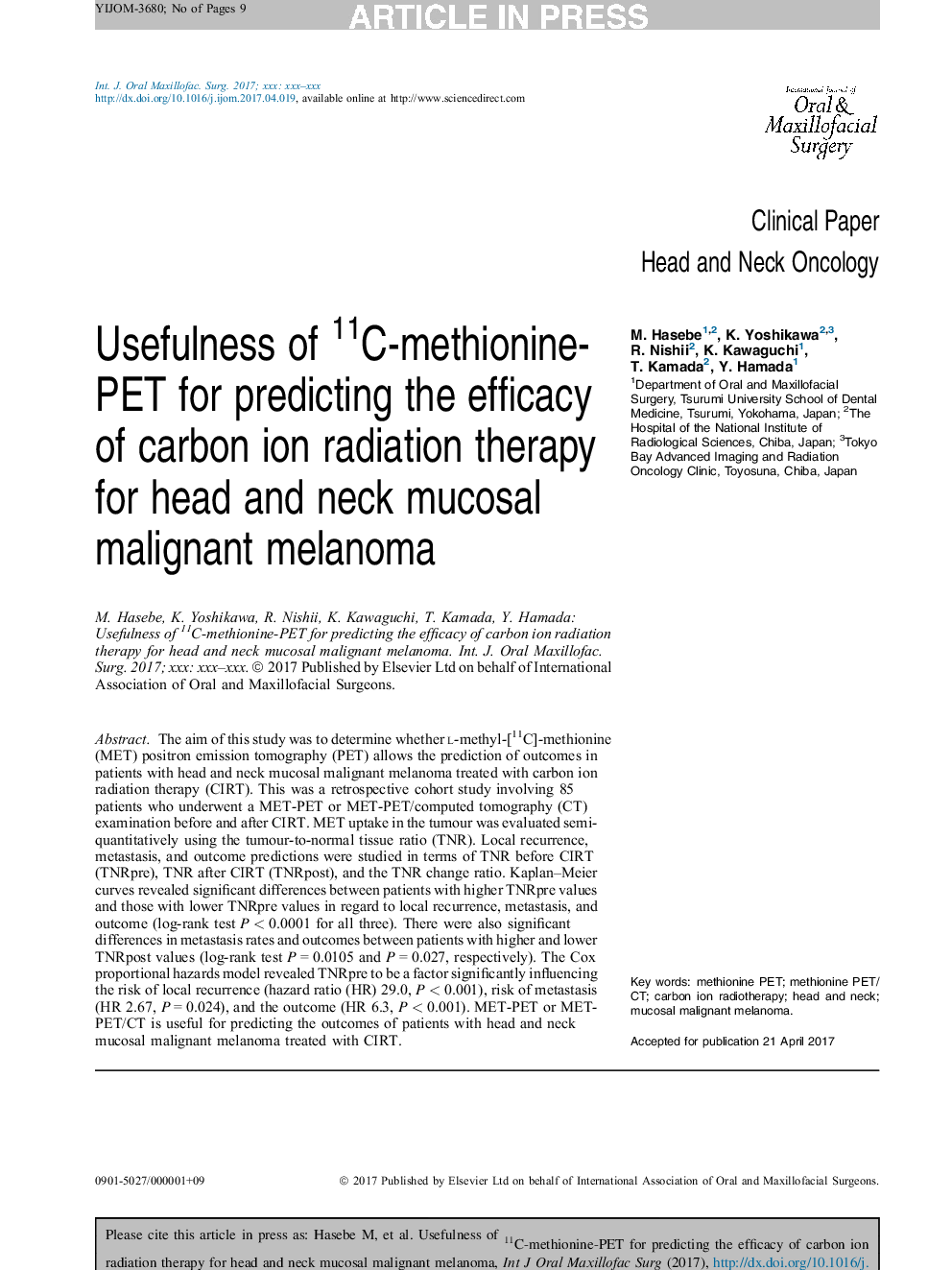| Article ID | Journal | Published Year | Pages | File Type |
|---|---|---|---|---|
| 5638890 | International Journal of Oral and Maxillofacial Surgery | 2017 | 9 Pages |
Abstract
The aim of this study was to determine whether l-methyl-[11C]-methionine (MET) positron emission tomography (PET) allows the prediction of outcomes in patients with head and neck mucosal malignant melanoma treated with carbon ion radiation therapy (CIRT). This was a retrospective cohort study involving 85 patients who underwent a MET-PET or MET-PET/computed tomography (CT) examination before and after CIRT. MET uptake in the tumour was evaluated semi-quantitatively using the tumour-to-normal tissue ratio (TNR). Local recurrence, metastasis, and outcome predictions were studied in terms of TNR before CIRT (TNRpre), TNR after CIRT (TNRpost), and the TNR change ratio. Kaplan-Meier curves revealed significant differences between patients with higher TNRpre values and those with lower TNRpre values in regard to local recurrence, metastasis, and outcome (log-rank test PÂ <Â 0.0001 for all three). There were also significant differences in metastasis rates and outcomes between patients with higher and lower TNRpost values (log-rank test PÂ =Â 0.0105 and PÂ =Â 0.027, respectively). The Cox proportional hazards model revealed TNRpre to be a factor significantly influencing the risk of local recurrence (hazard ratio (HR) 29.0, PÂ <Â 0.001), risk of metastasis (HR 2.67, PÂ =Â 0.024), and the outcome (HR 6.3, PÂ <Â 0.001). MET-PET or MET-PET/CT is useful for predicting the outcomes of patients with head and neck mucosal malignant melanoma treated with CIRT.
Related Topics
Health Sciences
Medicine and Dentistry
Dentistry, Oral Surgery and Medicine
Authors
M. Hasebe, K. Yoshikawa, R. Nishii, K. Kawaguchi, T. Kamada, Y. Hamada,
